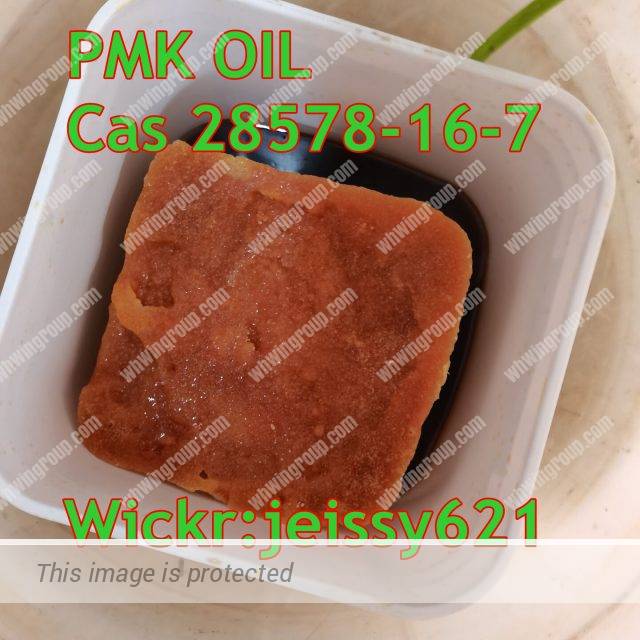What is PMK ethyl glycidate(Cas 28578-16-7)?
PMK ethyl glycinate (Cas 28578-16-7) is an analytical reference standard categorized as a precursor in the synthesis of methylenedioxy phenethylamines. Suitable for research and forensic applications.
There are two specifications: PMK methyl Glycidate powder Cas 13605-48-6, PMK ethyl Glycidate oil Cas 28578-16-7.
A short history of PMK calcined and PMK glycidic
PMK Glycine and PMK Glycidyl Acid can produce the controlled substance 3,4-Methylenedioxy and other “ecstasy” type substances. And is very important for the manufacture of these substances.
The APAA can manufacture the controlled substance amphetamine and is very important to its manufacture.Thus,It was finally determined that handlers (manufacturers, distributors, importers and exporters) of PMK Glycine.PMK Glycidyl Acid and APAA are in compliance with the chemical regulations of the CSA and its implementing regulations. Thus,there are no thresholds for domestic and international trade of these chemicals not mentioned.
Thus,he authorities will regulate all transactions involving these chemicals, regardless of size. Chemical mixtures containing any of these three chemicals, regardless of concentration, are not exempt from regulatory requirements.

What are the Chemical Mixtures of PMK Glycidate, and PMK Glycidic Acid?
Existing regulations
Chemical mixtures containing any of the three chemicals in any concentration would be subject to regulatory requirements under the final rulemaking. However, unless the manufacturer submits a chemical mixture exemption application to DEA.DEA accepts applications for filing, and DEA exempts this chemical mixture through: 21 CFR 1310.13.
Because of these three chemicals, even small amounts can produce large amounts of controlled substances. The DEA requires regulation of chemicals containing these three substances,to prevent their illegal extraction, separation and use.
This rule modifies the “Table of Concentration Limits” in 21 CFR 1310.12(c) to reflect the fact that chemical mixtures containing any amount of these three chemicals are subject to CSA chemical control provisions.Including 21 CFR parts 1309, 1310, 1313, and 1316.
Latest news
Police and customs seizure data suggest that the PMK glycerides market—the production and supply of precursors—and clandestine production of amphetamine-type stimulants (ATS) has become more diverse in recent years. Yet, identifying and quantifying the actual prevalence of new precursors requires ascertaining the percentage of seized ATS produced from them.
A recent study showing that APAAN use is declining suggests a new precursor. Different batches of glycidic acid derivatives and the complete Leuckart reaction, several transformation procedures to produce amphetamines.
At the same time, they found three labeled compounds and characterized them by mass spectrometry and nuclear magnetic resonance spectroscopy.These are phenyl-1-propanone, N-(1-phenylpropyl)formamide and 1-phenylpropan-1-amine. Investigate their prevalence by searching the amphetamine impurity analysis database for markers to determine the extent to which they have been present in amphetamine samples in recent years.
Based on data from more than 250 cases in the Central German Amphetamine Analysis Database. These three glycine-labeled compounds first appeared in 2009, and have been increasing since 2016.
How do you make benzyl methyl ketone?
By distillation of a mixture of barium or calcium salts of phenylacetic acid and acetic acid. Heat the vapors of the acid, thorium oxide catalyst, 3, 4 and by heating phenylacetic acid, sodium acetate and acetic anhydride.
PMK, as mentioned above, the only use of PMK Glycine and PMK Glycidyl Acid is as an intermediate in the manufacture of other “ecstasy” type substances. The only use of APAA is as a precursor to amphetamines.
What is the PMK chemical used for?
PMK Glycine and PMK Glycidyl Acid produce and are important in the manufacture of the controlled substance 3,4-methylenedioxy and other “ecstasy”-like substances.


